Why 'bad' items in games need to exist
One player's trash is another player's... well, trash, but it has a purpose just the same.
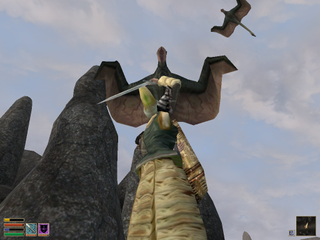
Did you wear the Colovian Fur Helm? If you played Morrowind you probably did. The Colovian Fur Helm is a piece of armor you can easily get at the start of the game—it literally falls out of the sky for you, being worn by a wizard whose spell doesn't work as intended—and you'll probably keep it for a while. At the start of Morrowind decent helmets are hard to come by, especially if you're cheap. The downside is that the Colovian Fur Helm looks like a big hairy nipple. No matter how badass the rest of your armor is, topping it off with a hat that makes you look like one of the Coneheads will ruin your ensemble.
I thought about that hat back when I was watching Hearthstone designer Ben Brode answer criticisms about the Purify spell, which players called a bad card. Actually they called it worse things than that, but let's stick with bad. “Some players actually like winning with bad cards,” Brode explained, before going on to discuss its potential for use in a “non-competitive fun deck”. Long past the point where it was a liability, I wore that silly Colovian Fur Helm because I'd started thinking it was funny defeating ghosts and monsters while wearing a conical nipplehat. It was bad, but that's what made it perfect for me.
Plenty of games have items in them that prove unpopular with players. Maybe they're equipment in an RPG, cards in a digital card game, guns in a first-person shooter, or power-ups in an arcade game. They could be ugly. Their stats could be terrible. Most players may shun them, but they still serve a purpose.
Guns & ammo
James Lopez, producer on the Borderlands series, provides me with the excellent names of several guns from Borderlands 2 that players considered bad: Flakker, Bane, Fibber, and Crit. They all had their moments to shine, however, as “there was an ebb and flow to the popularity of guns in the games—some were popular right off the bat but some were 'undiscovered' for a while until the community found things that made them special”, he says.
The Flakker for instance is a shotgun that shoots multiple explosive projectiles. They detonate at medium range, making it almost worthless against distant or nearby enemies. Plus, it fires very slowly. While the Flakker seems underwhelming for a weapon of 'legendary' rarity, it does have its uses. The sniper character Zer0 can combine it effectively with his Rising Sh0t ability, which lets him earn bonus damage for a short duration after every successful attack. The amount of bonus damage increases every time you hurt an enemy, so a single good shot with the Flakker can max out that bonus, after which you switch to a better gun to make use of it.
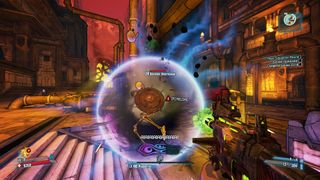
The Bane on the other hand is a submachine gun that drops your movement to a crawl and constantly shouts at you. When you shoot it screeches like Jim Carrey in Dumb & Dumber making the most annoying sound in the world, and it announces every reload by bellowing “Reloading!” Even taking it out it will make it announce “Swapping weapons!” Dropping the in-game volume to zero won't prevent it from ruining your eardrums, either. And yet there are people on YouTube using The Bane to defeat Borderlands 2's endgame raid boss Terramorphous the Invincible.
Borderlands is an unusual case in that most of its guns aren't unique like the Flakker and Bane, but procedurally generated. They combine effects in randomized ways so you might end up with a sniper rifle that reloads almost instantly or a pistol that shoots burning bullets. “It creates variety and depth,” Lopez explains, “as well as the possibility of the user getting a one of a kind gun that nobody else will have. You might pick up two Maliwan fire SMGs of the same level but they’re not going to be the same. And it might turn out that one is more your play style than the other, and the one you don’t like might be perfect for someone else in your party.”
PC Gamer Newsletter
Sign up to get the best content of the week, and great gaming deals, as picked by the editors.
When you do find a unique gun in a Borderlands game, something with a name like Good Touch or Teapot, you know it's special. That inspires players to figure out why a seemingly bad gun exists instead of chucking it aside like the disposable randomized weapons Borderlands games are full of. As Lopez puts it, “Giving them names creates a theme about the gun, a connection to how you got it, and can also inspire the community to learn more about it through forums, videos, wikis, etc.”
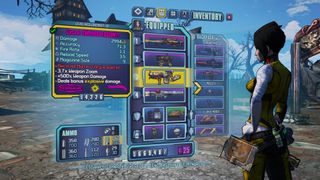
The drone & the skullcap
At the other end of the spectrum from Borderlands and its millions of guns is Assault Android Cactus, a twin-stick shooter in which each of its playable android characters only has two weapons. Some are regular fare like a flamethrower or a beam laser, but the android named Aubergine wields something different: an indestructible drone called Helo that causes damage in a circle and controls like a fishing rod. Hold down fire and the drone moves further away from her; release and it's reeled back in.
“Aubergine is the most divisive character in the game,” says developer Tim Dawson, “some people dig her, but a lot of players couldn't get their head around controlling her Helo drone while moving. She was meant to be an out-there character and push the envelope in terms of twin-stick shooter mechanics, but because she takes so much more work to get good at, plenty of people never did.”
The drone has advantages, like being able to cause damage to enemies while you hide behind a wall, but it's tricky to get used to compared to more straightforward tools like the shotgun or the drill. Not many players bother getting to grips with Aubergine and her drone.

“Even so, I'm glad she's in the game,” Dawson says, “she came about from realising our weapon designs were stagnating mid-development and sitting down to brainstorm something off the map. She's not only a good character for players who stick with her, but her existence in the game challenged us to make later weapons like the Railgun and Giga Drill more distinctive.”
Assault Android Cactus also has power-ups that appear regularly throughout each level. Each power-up initially appears as a red Firepower boost (adding hovering guns to your arsenal), but if it's not picked up immediately will transform into a yellow Accelerate boost (adding movement speed as well as slurping pick-ups toward you), and finally a blue Shutdown (sending enemies to sleep). The fact that players can choose which of the three power-ups to collect by timing it right inspired a vigorous debate on the game's forum over which was best.
Accelerate came off worst of the three by a fair margin. “Despite boosting speed, decreasing damage taken and pulling battery and weapon orbs in, some players began actively avoiding Accelerate,” says Dawson, “seeing it as a wasted opportunity to grab one of the other two power-ups, both of which had more overt offensive potential.”
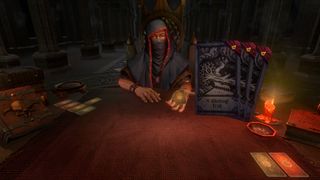
In the choose-your-own-adventure card game Hand of Fate, each of the player's items is represented by a card that becomes that piece of equipment and appears on your avatar when combat begins. They fall down on you like rain, if rain was made of helmets and axes. Though Hand of Fate is a very different game, just like Assault Android Cactus and its Accelerate power-up, players prefer equipment that has “overt offensive potential”.
According to its creative director Morgan Jaffit, “Something we notice a lot is that people generally prefer items with direct effects, rather than those that act on another system. A good example there is Skullcap of Prophecy, which reduces your cooldowns if you kill an enemy with a weapon ability. There's a lot going on there for a player to think about—how often do they kill enemies, how often do they get to use weapon abilities, how does reducing cooldowns help them, etc.”
The Skullcap of Prophecy can be part of a powerful combo when used with weapon abilities capable of finishing enemies off, reducing the cooldown on the ability that triggered the Skullcap in the first place in a repeatable loop. Most players don't bother with it, however, preferring to use gear that increases damage directly or doesn't require a decent weapon to synergize with.
Gear that has negatives as well as positives generally gets picked less than items that are a straight benefit. — Morgan Jaffit
“Likewise, gear that has negatives as well as positives generally gets picked less than items that are a straight benefit,” says Jaffit. “Forbidden Armor give you bonus damage resistance, but stops you being able to heal. People tended to just wear slower, less effective armour instead of dealing with the downside.”
And that's up to you. Choosing not to use items that handicap you—whether they provide some balancing advantage or exist simply to let you challenge yourself or fit a specific theme you're roleplaying—is a choice that's yours to make. But even if you do make that choice, the “bad” items you avoid still serve a purpose. As Jaffit says, “you always need contrast. No single item is 'good' in the abstract, you need other items to compare them to.”
If every card in Hand of Fate or Hearthstone was perfectly balanced for use with every playstyle, there would be no thrill to finding ones that suit you. If the power-ups in Assault Android Cactus were the same you'd never race dramatically across the level to grab the one you like, and if every gun in Borderlands was useful at every range and in every situation you'd never switch between them and find the perfect moment to bombard some bad guys with a shotgun that shoots exploding swords.
Even beyond stats, items with no value can be imbued with purpose by passionate fans. In Dark Souls, one of the starting gifts, a pendant, does absolutely nothing. Why would anyone pick it over a key that unlocks doors throughout the game? Fans of Dark Souls’ labyrinthine lore speculated on how the pendant might fit into the mythos until director Hidetaki Miyazaki revealed that it was basically a prank. But by then it had served its purpose, making Dark Souls just a little bit more mysterious.
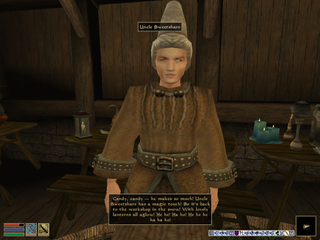
That Colovian Fur Helm served a purpose too. When I finally sold it in favor of wearing something made of enchanted green glass, I felt like a proper hero for the first time, not that joker straight off the boat with the pointy head.
I would have missed the Colovian Fur Helm, but fortunately the shopkeeper I sold it to was so impressed he put it on immediately and continued wearing it for the rest of the game. Every bad item is valuable to someone.

Jody's first computer was a Commodore 64, so he remembers having to use a code wheel to play Pool of Radiance. A former music journalist who interviewed everyone from Giorgio Moroder to Trent Reznor, Jody also co-hosted Australia's first radio show about videogames, Zed Games. He's written for Rock Paper Shotgun, The Big Issue, GamesRadar, Zam, Glixel, Five Out of Ten Magazine, and Playboy.com, whose cheques with the bunny logo made for fun conversations at the bank. Jody's first article for PC Gamer was about the audio of Alien Isolation, published in 2015, and since then he's written about why Silent Hill belongs on PC, why Recettear: An Item Shop's Tale is the best fantasy shopkeeper tycoon game, and how weird Lost Ark can get. Jody edited PC Gamer Indie from 2017 to 2018, and he eventually lived up to his promise to play every Warhammer videogame.
Most Popular

